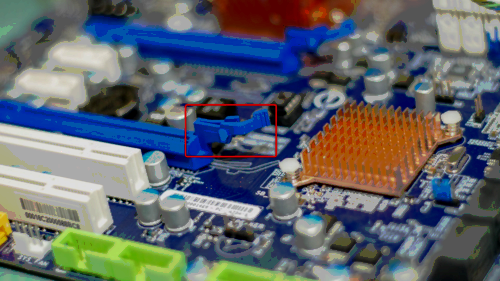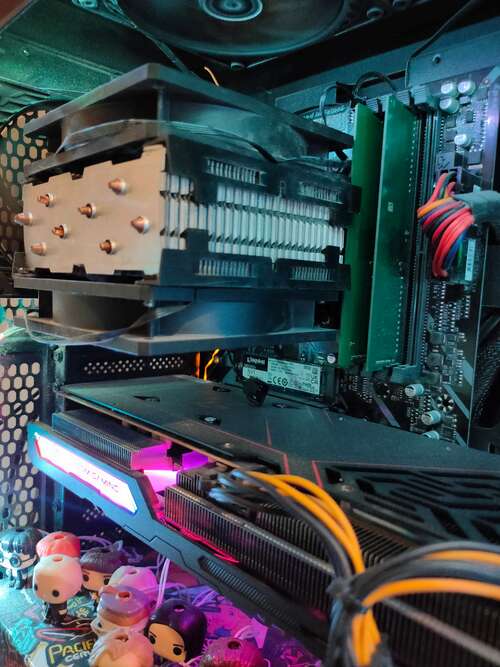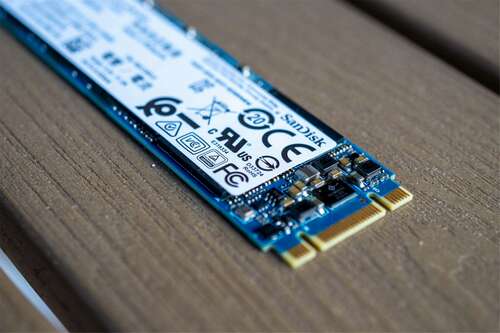Key Takeaways
- PCIe slots are universally compatible regardless of version as long as the graphics card fits.
- PCIe lane count is crucial – some graphics cards use fewer than 16 lanes, which might affect performance in older PCIe versions.
- PCIe versions matter most for SSDs with high bandwidth; PCIe 4.0 is ideal for a balance between price and performance.
With PCIe 7.0 around the corner, you might be concerned that your “old” PCIe 4.0 motherboard won’t be able to keep up with the latest graphics cards releasing. So, do PCIe versions actually matter for graphics cards, or are they overblown?
PCIe Is Forward and Backward Compatible
Before we get into the finer details of PCI Express (PCIe) slots, it’s important to point out that PCIe slots are universally compatible—similar to USB versions. As long as the device can physically fit inside the PCIe slot, it’ll work correctly.
PCIe has retained the same physical design, so you can plug a PCIe 4.0 device into a PCIe 3.0 slot or vice versa. You could even plug a PCIe 1.0 device into a PCIe 5.0 slot, and there won’t be any issues as long as the drivers work correctly.
In the context of graphics cards, nearly all of them use the PCIe x16 format, which is the longest slot that usually has a plastic retention clip on the right to keep the card in place. On most motherboards, this is the first slot from the top, and large motherboards have more than one.
The only difference between PCIe versions is the bandwidth speed per lane. The maximum transfer rate has been roughly doubled between each generation: PCIe 1.0 supports up to 0.250GB/s per lane, PCIe 2.0 supports up to 0.500GB/s per lane, etc. The upcoming PCIe 7.0 will support up to 15.125GB/s in a one-lane configuration, which is close to the bandwidth a PCIe 3.0 x16 slot can do.
While PCIe slots are backward compatible, both your PCIe slot and graphics card have to support the latest version if you want to take full advantage of the higher transfer rates. A PCIe 4.0 graphics card in a PCIe 3.0 slot will be limited to PCIe 3.0 speeds.
The Number of PCIe Lanes Is Just as Important as the Version
PCIe lanes are the channels on the motherboard and the graphics card that allow data to be transferred between the computer and graphics card. The number of lanes is indicated by a lower-case “x” followed by the number of lanes—A PCIe x16 slot has 16 lanes, whereas a PCIe x2 only has two lanes.
Here is where it gets interesting. Graphics cards have used PCIe x16 exclusively for a long time, but with the release of PCIe 4.0, some graphics cards got cut down to x8 or even x4 lanes. Since a PCIe x8 4.0 slot supports the same maximum transfer rate as the previous-gen PCIe x16 3.0 slot, NVIDIA and AMD opted to save a few bucks on their budget options by cutting down the cards to 8 lanes.
The issue with that is that if you install a PCIe x8 4.0 card into a PCIe x16 3.0 slot, you’re only getting half the maximum bandwidth because you’ll get limited to PCIe x8 at 3.0 speeds. In theory, this negatively affects performance.
The good news is that the performance impact is mostly negligible because your graphics card uses less bandwidth than you might think. I have an RX 6600 XT, which uses PCIe x8 4.0, installed in an older motherboard with a PCIe x16 3.0 slot, and I haven’t noticed any performance issues. Gamers Nexus tested the high-end RTX 4090 in PCIe 3.0, 4.0, and 5.0 slots and only found a performance difference of about 1–3% in most games.
So, while you should care about PCIe versions, it’s not a deal-breaker. Feel free to mix and match graphics cards and motherboards as you see fit. The only notable outliers are PCIe x4 graphics cards, with the most notorious examples being the RX 6400 and RX 6500 XT. These cards only use four PCIe 4.0 lanes, which means they suffer from serious performance issues in a PCIe 3.0 slot. I recommend steering clear of these cards as an upgrade in older systems.
PCIe Versions Primarily Affect High-Bandwidth SSDs
When even the highest-end graphics cards are hardly affected by PCIe versions, you can’t help but wonder why manufacturers have been pushing to newer versions in the past few years. The answer is high-bandwidth NVMe SSDs. High-end SSDs can take advantage of PCIe 4.0 and 5.0 in the form of breakneck transfer speeds. Still, unless you’re constantly transferring files from one SSD to another, you don’t really need a PCIe 5.0 SSD. For gamers, even a PCIe 3.0 NVMe can offer more than you’ll ever need.
Which PCIe Version Should I Buy?
Unless you’re building a $200 PC or an extremely high-end machine and need all the speed you can get, get PCIe 4.0 motherboards and PCIe devices. They strike the perfect balance between price and performance; your graphics cards and SSDs won’t be limited by the transfer speeds and number of lanes like on PCIe 3.0, and you won’t pay through the nose like you’d do with PCIe 5.0.




